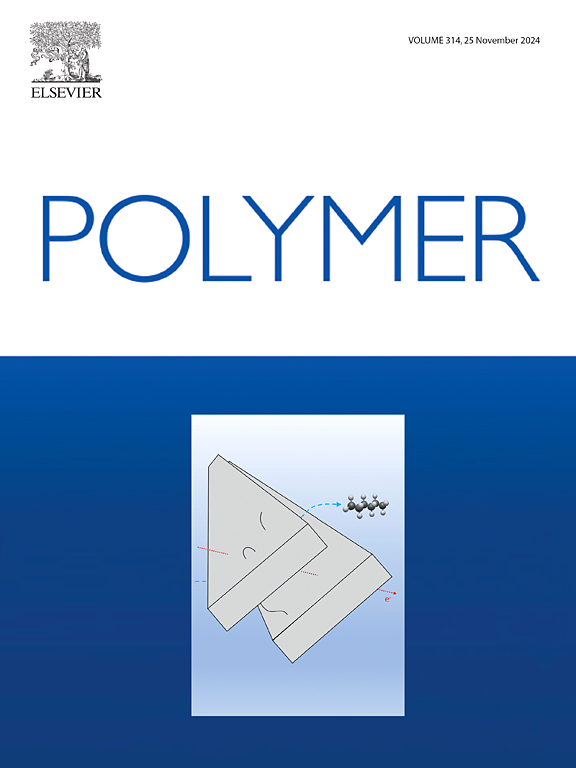Solution-blending strategy for multifunctional PLA/PCL/TiO2 composite films: Synergistic effects on mechanical reinforcement, ultraviolet shielding, and yellowing suppression
IF 4.5
2区 化学
Q2 POLYMER SCIENCE
引用次数: 0
Abstract
Polylactic acid (PLA), a biodegradable and biosafe polymer, nevertheless suffers from brittleness, poor thermal stability, and inadequate barrier properties. Blending PLA with ductile polymers (such as polycaprolactone) faces critical challenges including thermodynamic immiscibility, processing-induced degradation, and difficulty balancing stiffness-toughness trade-offs. To enhance properties of PLA, solution-blended films were prepared with PLA at 48.75 wt%, polycaprolactone at 48.75 wt%, and nano-titanium dioxide at 2.5 wt%. The prepared composite films exhibited improved mechanical properties. They achieved a UV protection factor of approximately 201, which is 40 times higher than that of films without TiO2. Additionally, the films displayed a yellowness index b∗ of 8.78, corresponding to a 4.99-fold reduction in yellowing compared to TiO2-free samples. These results highlight the composite's superior UV resistance and anti-yellowing efficacy for advanced material applications.


多功能PLA/PCL/TiO2复合薄膜的溶液共混策略:机械增强、紫外线屏蔽和抗黄变的协同效应
聚乳酸(PLA)是一种可生物降解和生物安全的聚合物,然而,它存在脆性、热稳定性差和屏障性能不足的问题。PLA与延性聚合物(如聚己内酯)的共混面临着严峻的挑战,包括热力学不混溶、加工引起的降解以及难以平衡刚度和韧性之间的权衡。为了提高PLA的性能,制备了PLA质量分数为48.75%、聚己内酯质量分数为48.75%、纳米二氧化钛质量分数为2.5%的溶液共混膜。复合膜的力学性能得到了改善。他们获得了约201的紫外线防护系数,比不含TiO2的膜高40倍。此外,薄膜的黄度指数b*为8.78,与无tio2样品相比,黄度降低了4.99倍。这些结果突出了复合材料在先进材料应用中的优越的抗紫外线和抗黄变功效。
本文章由计算机程序翻译,如有差异,请以英文原文为准。
求助全文
约1分钟内获得全文
求助全文
来源期刊

Polymer
化学-高分子科学
CiteScore
7.90
自引率
8.70%
发文量
959
审稿时长
32 days
期刊介绍:
Polymer is an interdisciplinary journal dedicated to publishing innovative and significant advances in Polymer Physics, Chemistry and Technology. We welcome submissions on polymer hybrids, nanocomposites, characterisation and self-assembly. Polymer also publishes work on the technological application of polymers in energy and optoelectronics.
The main scope is covered but not limited to the following core areas:
Polymer Materials
Nanocomposites and hybrid nanomaterials
Polymer blends, films, fibres, networks and porous materials
Physical Characterization
Characterisation, modelling and simulation* of molecular and materials properties in bulk, solution, and thin films
Polymer Engineering
Advanced multiscale processing methods
Polymer Synthesis, Modification and Self-assembly
Including designer polymer architectures, mechanisms and kinetics, and supramolecular polymerization
Technological Applications
Polymers for energy generation and storage
Polymer membranes for separation technology
Polymers for opto- and microelectronics.
 求助内容:
求助内容: 应助结果提醒方式:
应助结果提醒方式:


